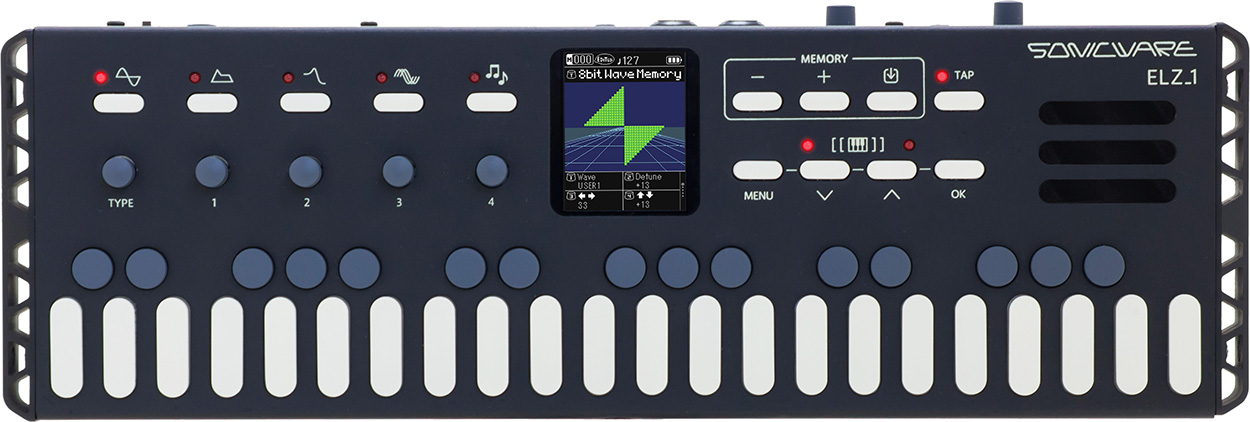
Review: Sonicware ELZ-1 Portable Synthesizer
It’s a ‘synthesizer reinvention laboratory’ that promises something different.
Sonicware offers some tasty new sound treats with their ELZ-1 ‘synthesizer reinvention laboratory’. It sits in the sub-$1k area of the market also occupied by Korg’s constantly growing Volca series and Teenage Engineering’s OP-Z and Pocket Operator products, so buyers are already spoilt for choice with a smorgasbord of relatively inexpensive sound generators.
So what’s different about the all-digital ELZ-1? Let’s flip the bonnet and find out.
THE SOUND
The ELZ-1 is a six-voice synth with Poly, Mono and Legato modes and has a generous selection of flexible and evocative sounding synthesis types, which I’ve listed elsewhere this page.
The ELZ-1 has a good selection of filter types designed to sculpt and enhance the various sound generation types: LPF-6, LPF-12, HPF-6, HPF-12, BPF, PEQ, Lo EQ, Hi EQ, Notch.
Complex envelope generators are also available to modulate the various parameters of synthesis engines: standard ADSR and ADSR with curve parameters, ADS-RA-R with additional key release control, and ADS-RA-R with curve parameters for extra shaping control.
The built-in arpeggiator has a good selection of up and down playback variations plus ‘random’ (functioning as you would imagine) and ‘play order’ (based on the order of the notes played). Tempo is set from the tap tempo button or can be adjusted using the time parameter. Gate time of notes can be changed from 10 to 90%. The ‘OK’ button is used as a Hold control for the playback so you can manipulate parameters without having to hold the keys.
Speaking of syncing clocks, the ELZ can use its internal clock, an external MIDI clock, an external clock pulse input through the Aux IN, or in Sync (Thru) mode, the received clock is also output from the headphone jack, allowing you to synchronise through to another device.
With the v2.0 update to the firmware added [v3 has now landed], Sonicware has now integrated a 64-step, six-voice step sequencer, with 128 patterns available. Sequencer functions are accessed with the same buttons as the arpeggiator. You can record notes in step time when the sequencer is stopped, or in real time when it is running.
A stereo audio output path is provided, with some great stereo effects, including Drive/Mod (overdrive, distortion and fuzz, chorus, flanger, phaser, ring modulator & auto wah); Modulation (stereo chorus, auto pan, ring mod, etc), Delay (stereo, tape echo and reverse), and Reverb (the usual suspects: room, plate, hall)
NEED TO KNOW


SAMPLE STORAGE
The ELZ-1 has internal memory for storing samples, system data and memories.
The large variety of synthesis types available, plus the ability to sample and import new audio data, coupled with an ample selection of filters and effects gives the user enormous scope in sound production and experimentation. The ELZ’s ability to work as a USB host or device provides expansion possibilities in any sized setup, especially with many of the available synth/sequencer/drum machine products mentioned in the sync/clock examples.
Sonicware is a new company from Japan, with an ability to develop and incorporate new ideas into its product, and also quickly learn and adapt to their market. Their initial slogan for the ELZ-1 was ‘synthesizer reinvention laboratory’, which I mentioned in the introduction. That description initially sounds like an awkward translation, but after using this product for a few weeks and considering its price tag, it certainly packs a lot of experimentation into a small footprint.
With three software updates already released, I see a great future for this product.
























RESPONSES